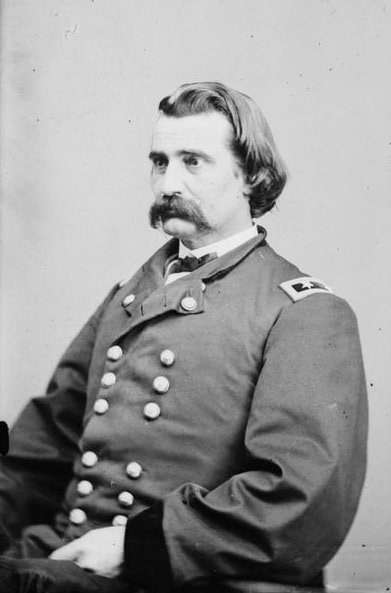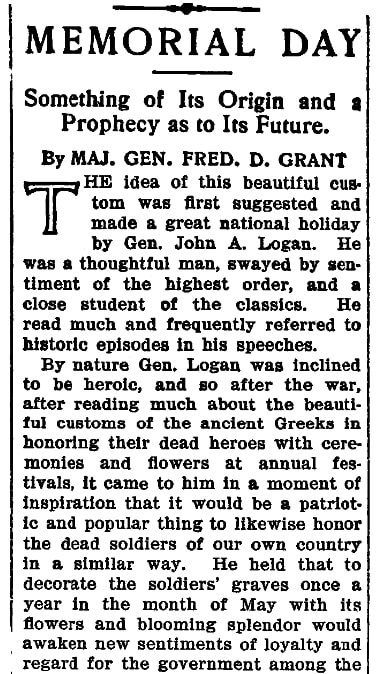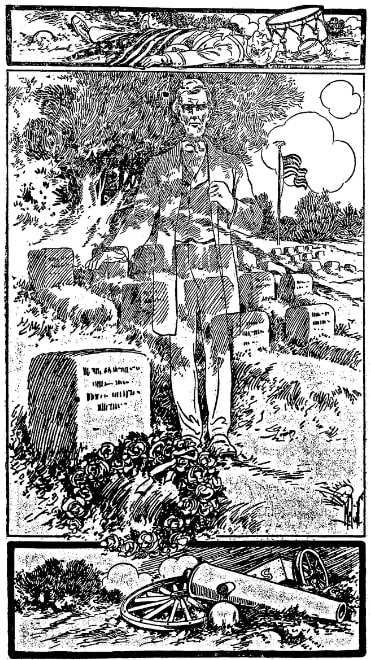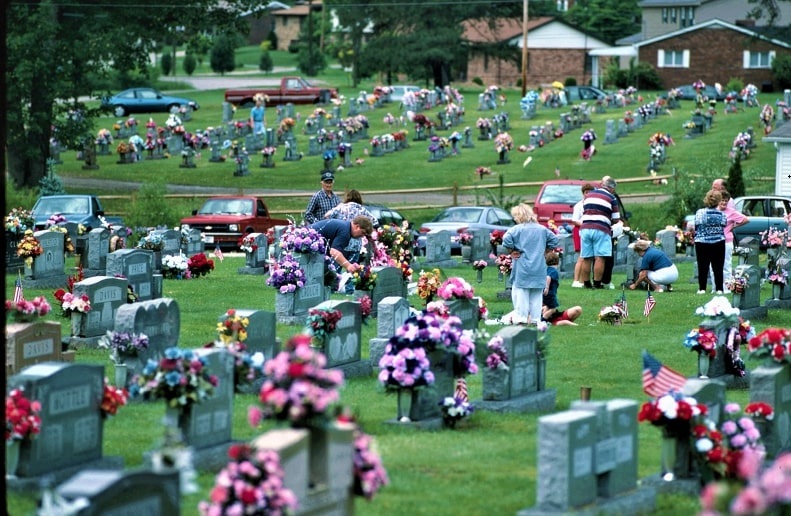Introduction: In this article, Melissa Davenport Berry writes about General John A. Logan, a driving force in making Decoration Day (Memorial Day) an annual observance. Melissa is a genealogist who has a blog, AnceStory Archives, and a Facebook group, New England Family Genealogy and History.
On Memorial Day Americans honor the soldiers who sacrificed their lives to fight for freedom and liberty. It is a treasured national holiday and GenealogyBank’s Historical Newspaper Archives have many articles on how the holiday came to be.

The best story is told by a good buddy of the founder: General Fred Dent Grant, son of Ulysses S. Grant. It was published in the Mower County Transcript in 1907. Grant writes on how Memorial Day, originally named “Decoration Day,” came about thanks to the leadership of General John A. Logan.

Here is a transcription of this article:
The idea of this beautiful custom was first suggested and made a great national holiday by Gen. John A. Logan. He was a thoughtful man, swayed by sentiment of the highest order, and a close student of the classics. He read much and frequently referred to historic episodes in his speeches.
By nature Gen. Logan was inclined to be heroic, and so after the war, after reading much about the beautiful customs of the ancient Greeks in honoring their dead heroes with ceremonies and flowers at annual festivals, it came to him in a moment of inspiration that it would be a patriotic and popular thing to likewise honor the dead soldiers of our own country in a similar way. He held that to decorate the soldiers’ graves once a year in the month of May with its flowers and blooming splendor would awaken new sentiments of loyalty and regard for the government among the people.
It was a fact, as he well knew, that nearly every household had lost one or more members or relatives or dear friends. Gen Logan’s inspiration awoke a response in every heart and his movement was soon organized and made of national importance. Grand Army posts were established in every section of the country. All agreed that decorating the graves of soldiers with flowers on the day appointed would give the nation new life and be welcomed by all the people.
But this is not all. The religious sentiment at the bottom of the idea – of honoring the dead soldiers and perpetuating the memory of their heroic deeds – made the day something higher and nobler than anything known in the days of the Greeks. Thus, it came about that Memorial Day became the greatest of all our American holidays. It was a day for the bereaved to commune at the tombs of their honored dead.
For many years, as we all know, the custom was an event – the most beautiful, pathetic and sacred of our holidays – but later on, as the ranks of the survivors grew thinner and the families who had contributed so many lives to the war passed away, the day became more like other holidays – a day more noted for military parades, a day for games and picnics and having a good time generally, until now the general public are coming to look on Memorial Day as an ordinary national holiday, like Washington’s Birthday or the Fourth of July.
Had it not been for the deep religious sentiment, with prayers and church services held in honor of the soldiers, Memorial Day would from the beginning in all probability have been attended with the noise and display of the Fourth of July. Fortunately this religious sentiment has made the people more thoughtful, and instead of noise and gun firing we have gone in for more quiet recreation – country picnics – making the day more like a festival than a day of mere noise and parade.
I think it is a beautiful idea, this decorating the graves of those who sacrificed their lives in the tremendous days of the war and purely out of patriotic devotion, and it is a pity indeed that public sentiment is gradually changing and we are forgetting the solemn lessons taught by the war and of the sacred meaning of honoring the dead – drifting away and making the sacred festival more and more a common holiday of races, noisy picnics and having a good time generally, with no particular sentiment animating the thousands who should take a higher view of Memorial Day.
The article was accompanied by this illustration.

General Grant lamented that Memorial Day had begun to mimic holidays like the 4th of July, where parades and picnics took precedence.
While this is true of some of us today, I believe General Logan has cause to smile down on many Americans who still carry out the faithful ritual of visiting the graves of soldiers who fought for their country, and pay homage on the hallowed grounds where their ancestors, loved ones, and friends are laid to rest. Yes indeed, America is keeping green the memory of the fiery warrior!

Note: It is true that women in both the South and the North began decorating graves of their fallen loved ones with flowers even before the Civil War ended. However, General Logan is generally credited for being the driving force in making “Decoration Day” officially recognized. While serving as Commander-in-Chief of the Grand Army of the Republic (GAR, a veterans’ group), General Logan issued a proclamation on 5 May 1868 calling for Decoration Day to be observed nationwide on 30 May 1868. He called on GAR posts all over the country to engage in fitting ceremonies and scatter tokens over the resting places of their former comrades in arms. The rest of the country was inspired to do what they could to honor the fallen soldiers, and the tradition of an annual Decoration Day was established, which became Memorial Day.
Note on the header image: Decoration Day in Hollywood Cemetery, Richmond, Virginia, 1867. Credit: VCU Libraries; Wikimedia Commons.

Melissa,
A great article; a tribute to General Logan and all of the fallen. Our fellow citizens need a strong reminder that the day is much bigger than the BBQ. Well done.
Thank you! It was great to find the newspaper clip written by Grant’s son. A real honor to his friend Logan.